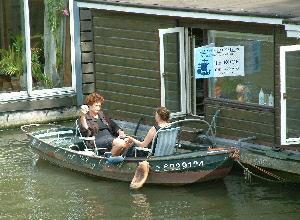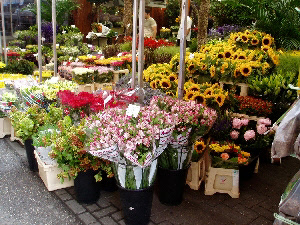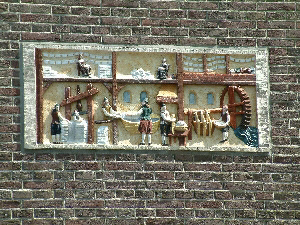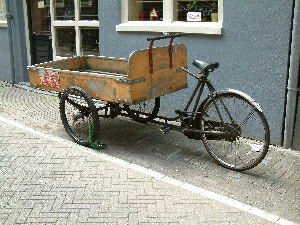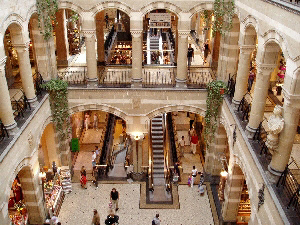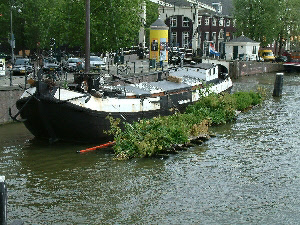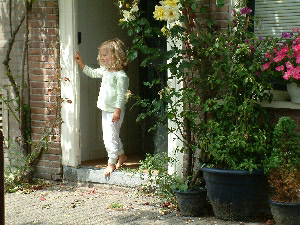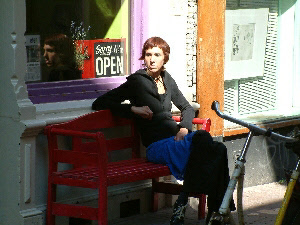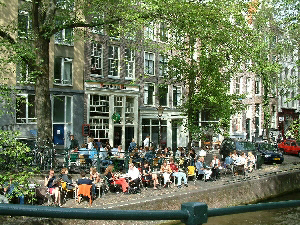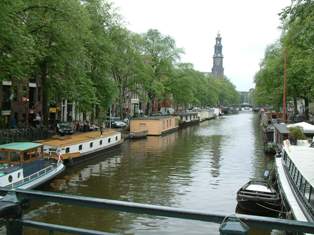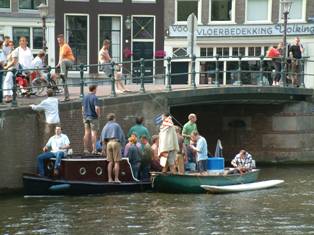Amsterdam in summer is one of the most beautiful cities in the world. Dappled sunlight caresses the ground under canal-side poplar trees and the life of the city is played out al fresco. This is quite a small city - much less than 1m population - and flat enough to encourage cyclists, who roam the streets and footpaths completely unchallenged.
Its narrow cobbled alleys and council bye-laws also discourage cars, so you can walk the streets quite safely, endangered only by the “Bing!” of approaching cyclists. This converted bike, right, of which there are many
What would Amsterdam be without its flowers! The beautiful massed display, left, was at the bloemen markt.
We have a boring old number on our house, and perhaps you have a nameplate announcing “Rose Cottage.” In Amsterdam they make gable stones. Some of them, as you can see on the right, are quite ornate, and considering they are kiln-fired ceramic, they would have cost a bit, too. Some of the city’s gable stones were made as early as as the low 1600s. They tell the occupation of the owner, in this case a miller.
If you like a shopping experience, rather than just going and buying something, then when in Amsterdam, go the the Magna Plaza, right. It’s quite magnificent; the coffee is yummy and the marbled rooms and columns give a sense of grandeur you don’t get at your neighbourhood supermarket.
Canal boat people like to be green. This owner, right, is growing grass and small bushes on a trellis he has suspended over the side of his boat. It’s to let the birds nest.
This is not a roaring, bustling city; its streets are surprisingly quiet and are genuinely safe. The little cherub, left, greets the morning sun halfway between the kitchen behind her and the footpath in front.
Here, cafe life is at its very best. Warm sun in the late afternoon, no work today because it’s the weekend, so we’ll meet our neighbours and our friends at the cafe on the canal. We’ll sit in the soft shade, a glass of excellent white wine in our hand and we’ll dip bread crusts into oil and balsamic vinegar. The canal gives the diners depth of view; and the houses crowding over them, as they have for 400 years, give them a sense of permanence and belonging in their own land. Nice place, Amsterdam.
I had just left Dam Square when I passed this cafe with with a stone-still girl outside it cut in half by bright sunshine on one side and deep shadow on the other. The sign in the cafe window says “Sorry we are OPEN.” I can believe that.
This is how laid back the locals get. Lunch in the dinghy, above, nice glass of wine, next to your houseboat, gently rocking on the canal in central Amsterdam. Now that’s what I call style...
similar, carries goods around the city.
Below is an example of just how much the Amsterdammers love their canals. In the
foreground is a small runabout taking friends and family for a little tour around
the waterways on a lovely sunny day. On the other side of the canal was a diving
competition of some sort - in spite of the cold water.
The view above is along Prinsengracht towards Westerkerk. It is one of the most beautiful
views in a city of striking vistas. The canal water is being constantly moved from
the sea on one side of the city, through the complex canal network and back out to
sea again. The water is cold, but not particularly clear because the passage of the
water is quite slow.
At night, you can hear the tunes of the bells of Westerkerk, and remark on the clarity
and depth of tone of its big bell. It is evocative of Amsterdam’s long history and
reminds you that this was once a powerful and wealthy city-state with an empire of
its own.
